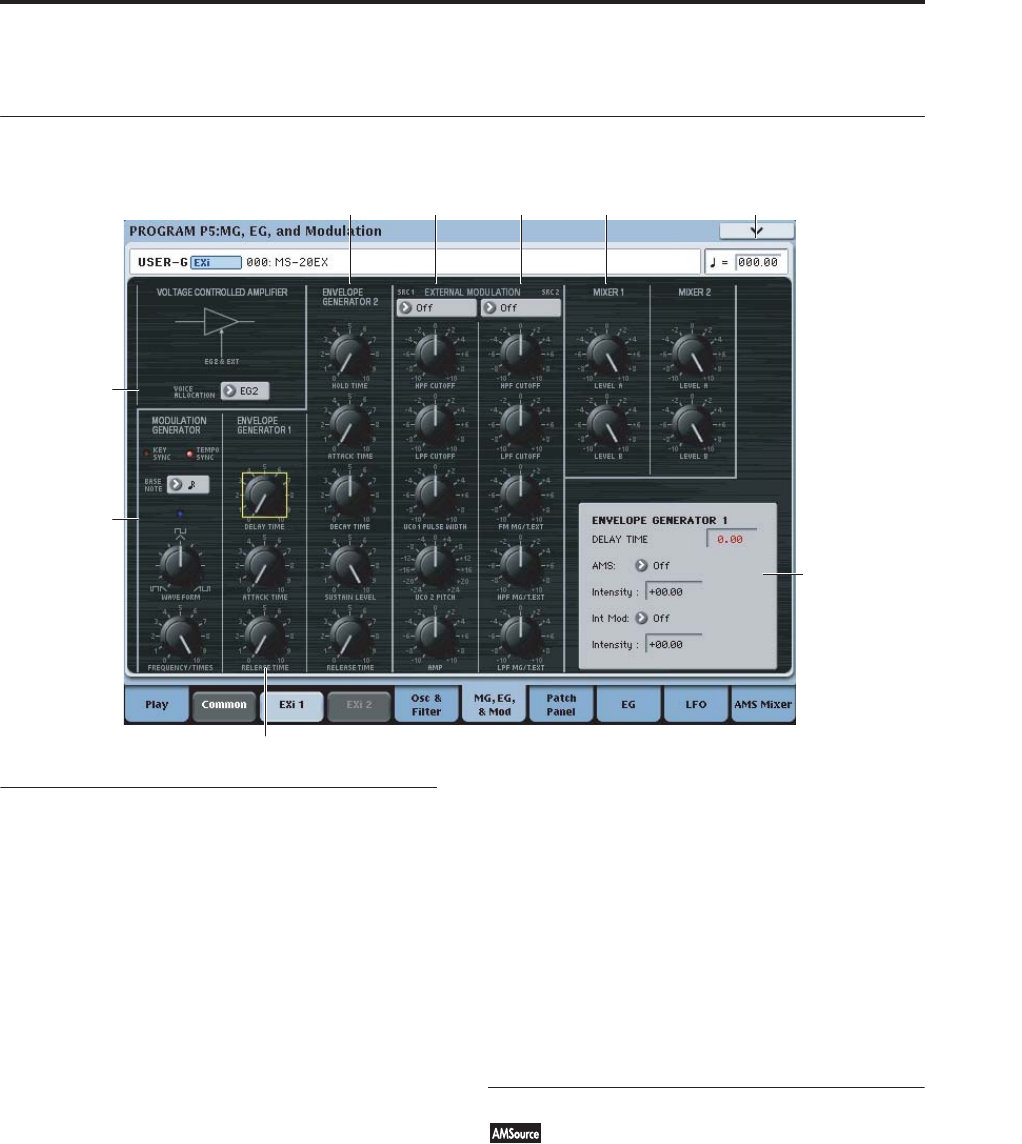
Program P5: MG, EG, & Modulation 5-1: MG, EG, & Modulation
289
Program P5: MG, EG, & Modulation
5-1: MG, EG, & Modulation
5–1a: VOLTAGE CONTROLLED AMPLIFIER
VOICE ALLOCATION [EG1…EG6]
When the EG selected here completes its release stage,
the voice will be silenced, and its processor resources
freed.
Normally, you should leave this at the default setting,
EG2.
If EGs other than EG2 are modulating volume (see
below), then select the volume-related EG with the
longest release time.
Note: the EG selected here cannot be retriggered once
it enters its release phase.
What does this mean, and when is it useful?
OASYS allocates processing power automatically as
you play and release notes. In order to do this, the
system needs to know when a voice has finished
playing.
With most EXi, the system does this by looking at the
dedicated Amp EG; when the Amp EG completes its
release, the system knows that the voice has finished.
The MS-20EX is more complicated than most EXi.
Depending on the Patch Panel and AMS settings,
several EGs may act together to control the output
volume. For instance:
• EG 1 and EGs 3-6 may be routed to the Patch
Panel’s VCA INITIAL GAIN input
• EGs 3-6 may control the VOLUME knob via AMS
• Via AMS, EGs 3-6 may also control the levels of
other modulation sources (such as EGs 1 & 2, the
MG, LFOs, etc.) routed through MIXER 1 or MIXER
2, and then patched to the VCA INITIAL GAIN
input
To handle all of these possible cases, instead of using a
fixed “Amp EG” to determine when the voice is
finished playing, the VOICE ALLOCATION
parameter lets you select which EG to use.
For best results with any of these special-case setups,
set VOICE ALLOCATION to use the volume-related
EG with the longest release time.
5–1b: MODULATION GENERATOR (MG)
The MG is shared between all MS-20EX voices, similar
to the Common LFO. For per-voice modulation, use
LFOs1–4 instead.
The saw/triangle and pulse/square waveforms are
both generated all of the time, and available separately
on the Patch Panel. Each is also available as an AMS
source, named MG Tri and MG Pulse, respectively.
Note that the AMS versions will have slightly softer
edges than the signals available on the Patch Panel,
and via the External Modulation sections.
TEMPO SYNC [ON, OFF]
Touch the text/LED area to turn TEMPO SYNC on
and off.
5–1a
5–1b
5–1c
5–1h
5–1PMC5–1e5–1d 5–1f 5–1g


















